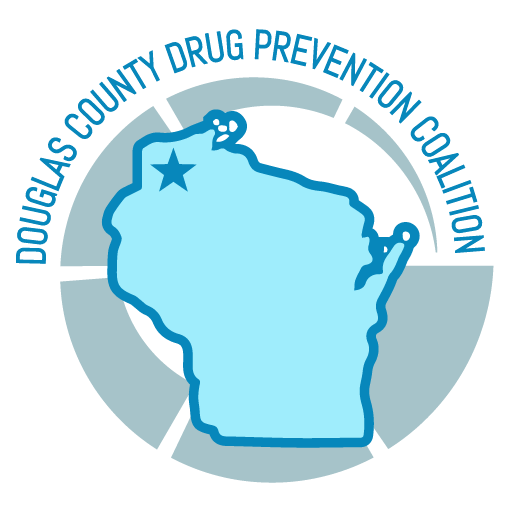Cocaine Facts: Understanding the Risks and the Road to Recovery
A Supportive Guide for Teens, Parents, and Families in Douglas County
Why This Matters
Cocaine might seem like something only people in movies use—or something that “won’t happen in my school.” But the truth is, cocaine has made its way into communities across the country, including Douglas County. And what used to be considered a “party drug” has become more dangerous than ever.
Whether you’re a teen trying to understand the risks or a parent trying to protect and support your child, this guide is here to break it down honestly—with facts, not fear.
Our message is simple: recovery is real, support is available, and staying informed can help save lives.
What Is Cocaine?
Cocaine is a powerful stimulant drug that speeds up the brain and body. It’s made from the leaves of the coca plant and most often appears as a white powder. Users typically snort it, but it can also be smoked or injected.
There’s also a form called “crack cocaine”—a crystallized version of the drug that’s smoked and often much more intense and addictive.
Cocaine goes by many names, including:
Coke
Blow
Snow
Crack
Rock
No matter what it’s called or how it’s used, cocaine is dangerous—and highly addictive.
Why Do Teens Try Cocaine?
The reasons teens experiment with any drug often come from a mix of curiosity, pressure, and underlying struggles. Here’s why some teens might try cocaine:
To feel more confident or energetic
To stay awake or focused (especially in school or sports)
Out of curiosity or peer pressure
Because they believe it’s not as dangerous as other drugs
To cope with stress, anxiety, or emotional pain
But what might start as “just trying it once” can quickly spiral into something much harder to control.
What Cocaine Does to the Body and Brain
Cocaine has intense effects on the body—and they start almost immediately. Some users say it makes them feel powerful, confident, or “invincible” at first. But those short-term highs come with major risks.
Short-Term Effects:
Rapid heartbeat
Increased blood pressure
Elevated body temperature
Restlessness or anxiety
Intense euphoria followed by a crash
Paranoia or aggressive behavior
Long-Term Effects:
Heart problems (even in young people)
Damage to the brain’s reward system
Anxiety, depression, and paranoia
Nose damage (from snorting)
Weight loss and malnutrition
High risk of overdose
And here’s what many people don’t realize: even a single use can lead to heart attack, stroke, or sudden death. Especially now, with fentanyl being mixed into street drugs more often.
The Hidden Danger: Fentanyl Contamination
One of the biggest threats today is fentanyl—a powerful opioid that is often mixed into other drugs like cocaine, without the user knowing.
Fentanyl is so potent that even a tiny amount can be fatal. Many overdose deaths in recent years involved people who thought they were using only cocaine but had unknowingly taken a deadly mix.
For teens and families in Douglas County, this makes education and prevention more important than ever.
Signs Someone May Be Using Cocaine
Whether you’re a parent concerned about your teen or a teen worried about a friend, here are some red flags to look for:
Physical Signs:
Frequent nosebleeds
Dilated pupils
Hyperactivity or restlessness
Loss of appetite and weight loss
Unusual sleep patterns (up all night, crashing all day)
Behavioral Signs:
Sudden mood swings or aggression
Financial issues (stealing or asking for money)
New friend groups or secrecy
Poor performance in school or sports
Lying or being defensive about whereabouts
Early intervention is key. If you notice any of these signs, it’s time to have an open, honest conversation.
What Cocaine Addiction Looks Like
Cocaine addiction doesn’t always look like the movies. It can sneak up quietly, especially in teens. Here’s how it can develop:
Experimental Use – Trying it “just once” at a party
Occasional Use – Using on weekends or during high-stress times
Regular Use – Starting to crave it or use it to function
Addiction – Needing more to feel the same effect, losing control
Cocaine addiction is both physical and psychological. It changes how the brain processes pleasure and decision-making, making it harder to quit without help.
The Road to Recovery
The good news? Recovery from cocaine addiction is possible. Thousands of teens and adults reclaim their lives every year—and the earlier someone gets help, the better their chances.
Step 1: Recognize the Problem
Admitting there’s an issue isn’t about shame—it’s about courage. Whether you’re the person using or someone who loves them, identifying the problem is the first big step.
Step 2: Seek Support
You don’t have to do it alone. Support can come from:
Trusted adults (parents, teachers, coaches)
School counselors
Youth support groups
Family and friends
Step 3: Get Treatment
We’ll talk more about treatment programs in our next blog post, but know this: there are programs made just for teens, and there’s help available in Douglas County.
What Teens in Recovery Want You to Know
“I thought quitting coke would be impossible. I felt so hooked on the high. But once I started going to recovery meetings, I realized people really cared. I wasn’t a bad person—I was just someone who needed help.”
— Gavin, 17
“My mom found out I was using and didn’t yell—she just hugged me and said, ‘We’re going to get through this.’ That changed everything.”
— Leila, 16
“I relapsed once. I felt like a failure. But my counselor told me recovery isn’t about being perfect—it’s about getting back up.”
— Jamal, 18
Real stories like these remind us that addiction doesn’t have to be the end of the story. Recovery is the next chapter—and it’s full of hope.
How Parents Can Help
Supporting a teen through addiction and recovery isn’t easy, but it’s one of the most powerful things a parent can do. Here’s how:
Stay calm and listen: Create a safe space for your teen to talk without fear of judgment or punishment.
Set clear boundaries and expectations: Let them know drug use isn’t acceptable, but neither is giving up on them.
Get professional support: Reach out to school counselors, recovery centers, or family therapy programs.
Attend support groups yourself: Al-Anon and Nar-Anon meetings are great places to connect with other parents.
Celebrate progress, not perfection: Every day without drug use is a win.
Local Support in Douglas County
Douglas County is committed to creating a drug-free, recovery-friendly community. If you or someone you love is struggling with cocaine or other drugs, here are some local resources:
Douglas County Youth & Family Services
Teen counseling and addiction programs
Family therapy and recovery education
Local Recovery Meetings
Teen NA and SMART Recovery groups
Alateen and parent support meetings
School-Based Support
On-campus counselors and peer mentors
Confidential referrals to treatment services
👉 Visit our [Local Resource Guide] or call the Douglas County Recovery Helpline for up-to-date info and meeting times.
Prevention Starts with Knowledge
Teens: the more you know, the stronger your choices. You don’t need to experiment to understand how serious cocaine can be. Ask questions. Talk to people you trust. And know that choosing to stay drug-free is one of the strongest, smartest decisions you can make.
Parents: keep those conversations going. You don’t have to be an expert—you just have to care. Teens notice when you’re there for them, even when they act like they don’t.
Common Questions from Teens
“Is cocaine really that addictive?”
Yes. It creates strong cravings and can change how your brain reacts to pleasure and stress—making it very difficult to stop once someone starts.
“Isn’t it safer than opioids or heroin?”
No. Cocaine is often cut with other drugs, including deadly fentanyl. Plus, it can cause heart problems, strokes, and seizures—even with short-term use.
“What if I already tried it—am I doomed?”
Not at all. Trying a drug doesn’t define you. What matters is what you choose next. There’s always a way back to health and recovery.
Final Thoughts: There’s Always a Way Back
Cocaine might promise quick energy or excitement, but the reality is far more serious—and dangerous. What starts as fun can turn into fear, addiction, and heartbreak.
But it doesn’t have to.
With the right support, real conversations, and a community that cares, teens and families in Douglas County can build a future that’s strong, healthy, and drug-free. Whether you’re just learning about cocaine or looking for ways to help someone you love, know this:
💬 You’re not alone. Help is here. Hope is real. Recovery is possible.
About Us
Serving all of Douglas County to provide education across the lifespan, improve community literacy about substance abuse and improve access to treatment for addiction.
- +(805) 498-4719
- Medplus@info.com
- 3421 Lesser Dr Newbury Park, CA 91320
Quick Links
About Us
Our Mission
Contact Us
Event Calendar
Success Stories
Projects
Dose of Reality
Drug Take Back
Small Talks
Tobacco is Changing
Recent news
- All Post
- Alcohol & Tobacco
- Drug Related Topics
- For Parents & Guardians
- For Youth



